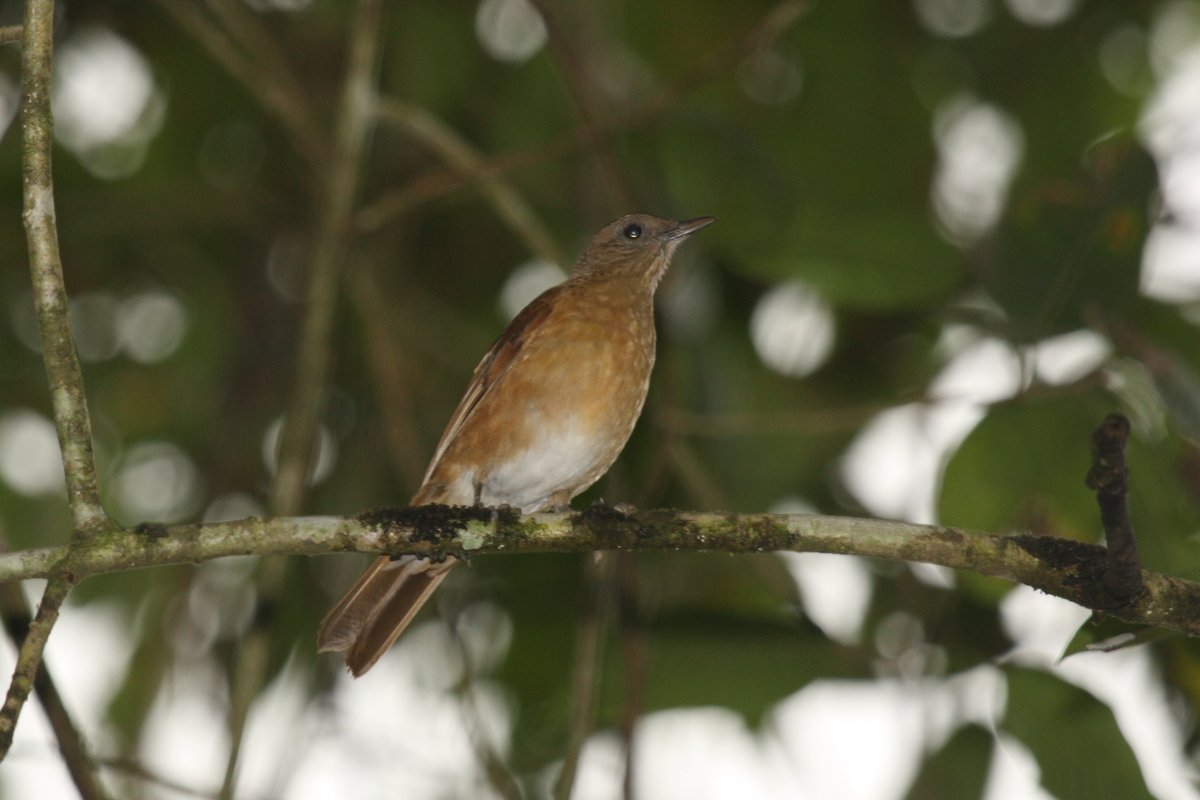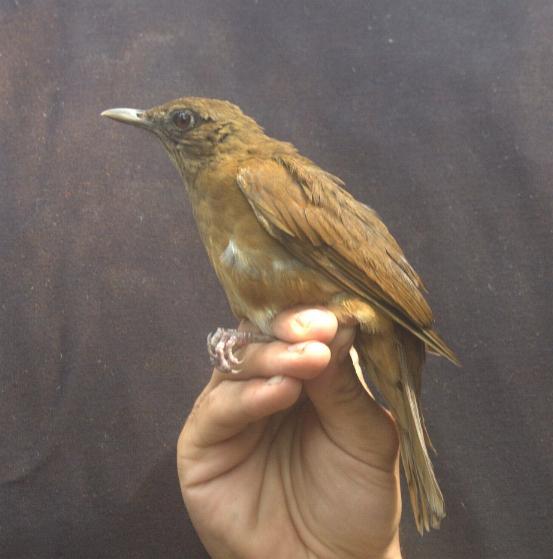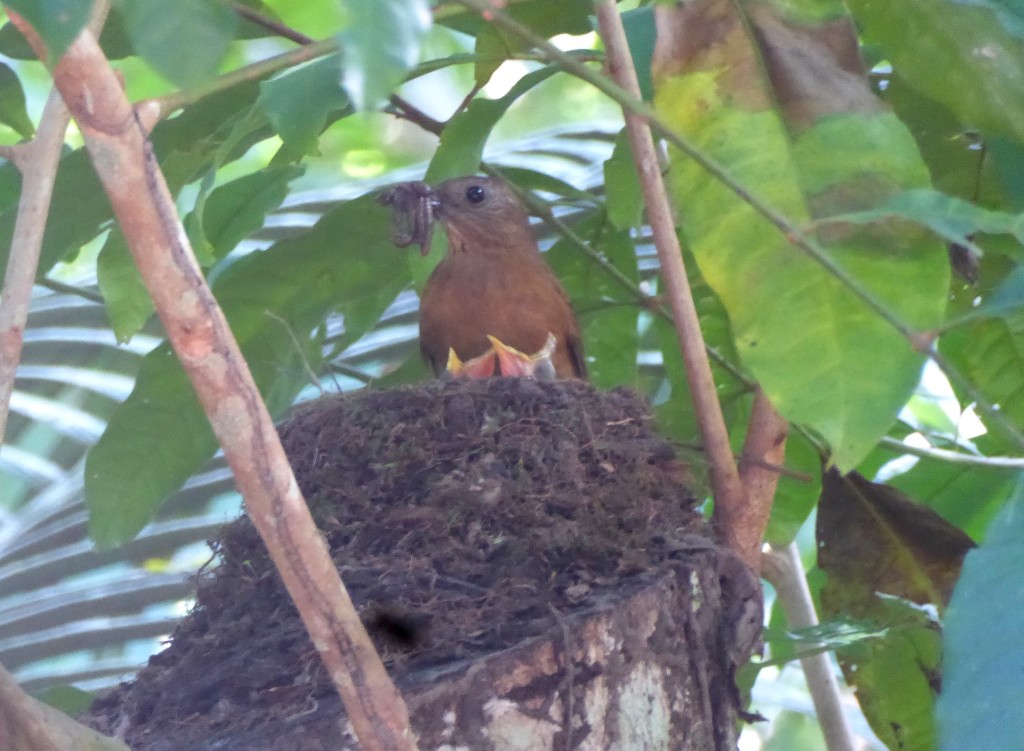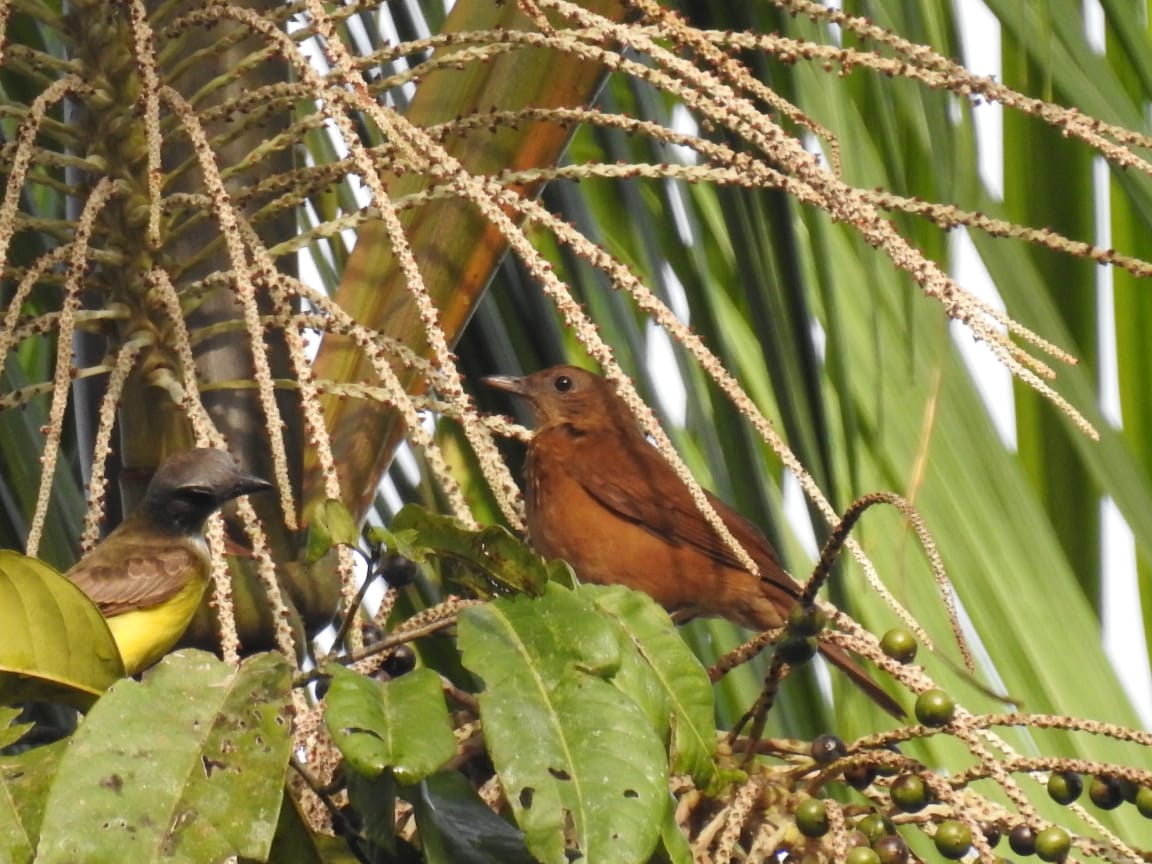 Cocoa Thrush (Turdus fumigatus)
Cocoa Thrush (Turdus fumigatus)
 Cocoa Thrush (Turdus fumigatus)
Cocoa Thrush (Turdus fumigatus) |
 |
| Pictures (click on them to enlarge) | ||
|---|---|---|
 © Ward Vercruysse |  © John Mittermeier |  © Aernout Nieuwkerk |
 on euterpe palm © Dominiek Plouvier |
| Cocoa Thrush: The first photo was made by Ward Vercruysse near Paramaribo-West in March 2009. Then a photo of John Mittermeier on the Sipaliwini savanna in 2006. This cinnamon brown thrush is found on sandridges in the coastal region, like the ones near Paramaribo, in savanna forest and also in more dense forest like sometimes in the Ralleigh falls nature reserve.
Aernout Nieuwkerk saw a breeding Cocoa Thrush near Berlin on the savanna with two young in November 2017. A photo by Dominiek Plouvier shows that the Cocoa thrush likes podosiri also. And the sulphury flycatcher too! Not always near Mauritius palms apparently, as there was none in the neighbourhood. Dominiek Plouvier made the video. |
| Video (click the link or the 'play'-button to see) | ||
|---|---|---|
| Video recording of a Cocoa Thrush © ; |
|
|
||||||||||||||||||||||||||||||||||||||||||||
| Observations through the year | Observations of breeding through the year |
|---|---|
| The 115 reported observations of this bird in Suriname, mainly for the last 50 years up to 2018, have been grouped by month. More birds on one day are counted as one observation. Of course, if the graph should depict the total number of birds seen, the differences between the months could be much more pronounced. | The 4 reported breeding observations of this bird in Suriname. Most observations are about nest with eggs, some about fledglings, or feeding at a nest or the building of a nest. Of the about 5000 nests and eggs found for all species together, about 1/3 comes from the egg collection of Penard between 1896 and 1905. For some reason most collecting then was done in the first half of each year, so the shown distribution does not necessarily reflect the actual breeding preferences. The main dry season in Suriname is reckoned to be from half August to the end of November, the main wet season from half April to half August, but the the timing of begin and end does vary from year to year. Around March a second dry season often occurs. |